Ah, baseball! The great American pastime. A sport filled with sunshine, hot dogs, and…fat players? It’s no secret that many baseball players carry a little extra weight, but why are baseball players fat?
Well, one major factor is diet and nutrition. For reference, if a person’s BMI (Body Mass Index) is above 25 to 30, he’s considered overweight. And guess what! 80% of baseball players nowadays reached the BMI milestones.
So, coming up with the curiosity about unexpected fatness in your favorite athletes is somewhat legit.
In this post, I will break down all the scientific facts that are causing and influencing Major League Baseball players to become overweight and obese.
What Percentage (%) of Baseball Players Are Fat?
Here’s a shocking fact – according to Penn State University’s recent investigation, MLB players have become increasingly overweight and obese over the past 25 years!
The study analyzed 145 years of data. They found that players’ weight had been stable for over 100 years, with most falling within a normal body mass index (BMI).
However, from 1991 onwards, the average player’s BMI began to increase, and today, almost 80% of players are considered overweight or obese with a BMI above 25.
The study highlights potential long-term health risks for this group and for those who perceive them as role models for health and human performance.
This calls for some attention to players’ health and fitness. Let’s hope MLB takes action and encourages healthier lifestyles for its players.
5 Reasons Why Are Baseball Players So Fat Than Other Sports?
Fat isn’t always bad in sports. Baseball is such an example. However, anything excess is also harmful. Learn more about this context below.
1. Role of Diet and Nutrition in Baseball
Many baseball players consume a high-calorie diet to maintain energy levels and support physical activity. However, unhealthy food choices and overeating can contribute to weight gain and obesity.
Baseball players need a lot of energy to perform at their best, especially during games that can last a whole day.
And what better way to get that energy than by consuming a high-calorie diet?
The problem is not all calories are created equal. A diet filled with junk food and sugary drinks can lead to weight gain and other health issues.
Several studies have been conducted to measure the overweight and obesity data in Major League Baseball players (from 1991 to 2015).
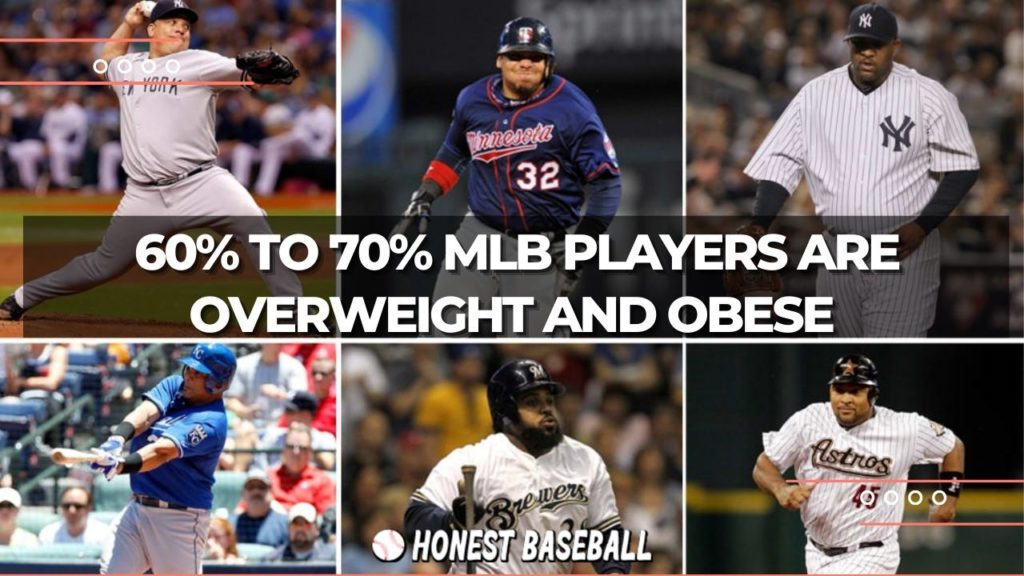
However, in the last decade, the percentage has been lowering as players are nowadays more concerned and conscious about health than before.
“Success in baseball, in general, depends on keeping a healthy body and concentrating on mastering the physical abilities required for the position played.”
Check out: Sunflower Seeds Benefits For Baseball Players And Athletes
2. Physical Demands of the Sport
Baseball is a sport that places unique physical demands on its players, which can contribute to the higher body fat percentages often seen in professional baseball players.
While baseball players may not need the same level of speed and agility as athletes in other sports, they require a high degree of muscular strength and endurance to perform well.
For example, baseball hitters need the strength to hit the ball with power and accuracy, which can be conquered through drilling. The same is required for pitchers or fielders when it comes to pitching or throwing the balls.
Additionally, baseball games can be lengthy, lasting for several hours and requiring players to perform a wide range of physical activities throughout the game.
Baseball players usually focus on building muscle mass rather than maintaining a lean physique to meet these physical demands.
“Muscle mass is important for generating power in hitting and throwing, as well as for endurance during long games.”
While building muscle mass is vital for performance, it can also contribute to higher body fat percentages.
Muscles require energy to maintain, and excess energy is often stored in the body as fat.
Additionally, baseball players may consume a high-calorie diet to support their physical activity, which can contribute to weight gain if not carefully managed.
3. Injuries and Recovery Process Cause Players to Gain Weight
Just like in other intense sports, injuries are also an unavoidable part of playing baseball. They can significantly impact a player’s weight and body composition.
Players take time off from training, drilling, and competing during minor and severe injuries. It leads to decreased physical activity and a corresponding increase in body fat percentage.
“Because of the inactive period, players’ body’s metabolic rate slows down, and the muscles start to atrophy or lose mass. This causes a decrease in calorie expenditure and an increase in body fat percentage.”
Moreover, some injuries may require a player to undergo surgery or other medical procedures, which can further impact their weight and body composition.
For example, some surgeries require players to be sedentary for an extended period. Therefore, they can’t participate in hardcore training activities and, as a result, become fat.
4. Genetics and Individual Differences Can Also Be a Reason
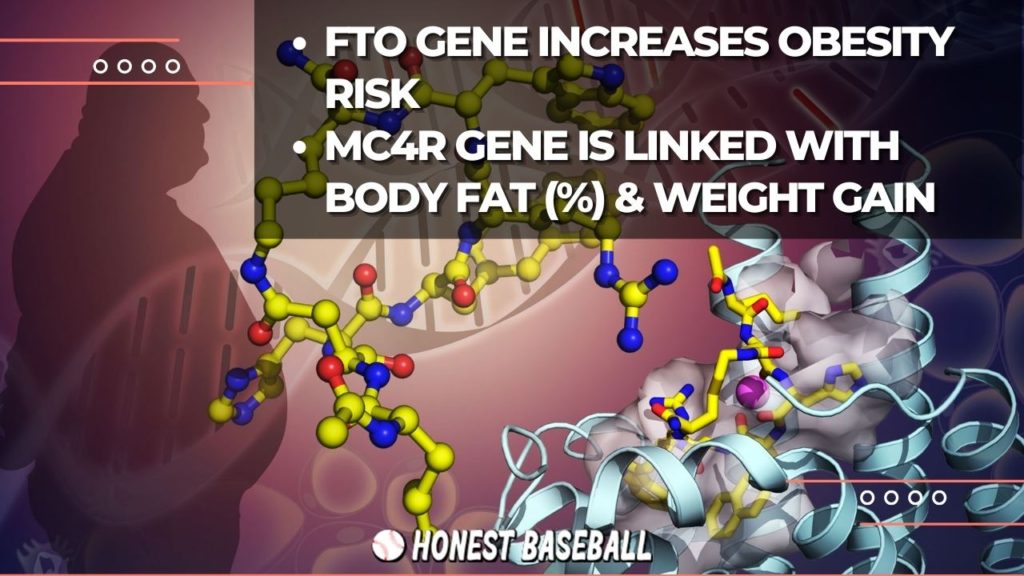
While all players need to maintain a certain level of fitness and athleticism to perform well, some players are genetically predisposed to carrying excess body fat.
Studies have shown that specific genes can influence a person’s body composition and how they store and use fat.
“For example, variations in the FTO gene have been associated with an increased risk of obesity, while variations in the MC4R gene have been linked to differences in body fat percentage and weight gain.”
In addition to genetics, individual differences in metabolism and lifestyle factors also impact body composition.
Some players may have a naturally slower metabolism, making it harder to maintain a lean physique.
Others might have lifestyle factors such as stress or poor sleep habits that can affect their body composition.
Furthermore, different positions in baseball require different body types and body compositions.
“For instance, pitchers can benefit from having extra body fat to help them generate energy, while infielders may need to be leaner and more agile to move quickly and make quick plays.”
5. Use of Steroid and Performance-enhancing Drugs
Yes, unfortunately, the dark step of steroids and PEDs are also witnessed in the world of baseball.
While Major League Baseball prohibits these drugs, some players have been known to use them to improve their performance and gain muscle mass.
Famous and potential players like Alex Sanchez, Rafael Palmeiro, Matt Lawton, and many more were caught and suspended from MLB due to drug addiction.
Both steroids and other PEDs can significantly affect a player’s body composition. These drugs work by increasing the body’s production of testosterone, leading to an increase in muscle mass and strength.
“However, they can also have negative side effects, including weight gain and increased risk of injury.”
Steroid uses have been linked to increased body fat percentage, particularly in the abdominal area. This can increase the risk of health problems such as heart disease and diabetes.
Additionally, steroid use causes other health problems, such as liver damage, mood swings, and decreased fertility.
9 Famous Fatty Baseball Players in the History of MLB
Being overweight and fat yet dreaming of shooting the stars in baseball isn’t a sin. Moreover, many MLB stars were criticized for their fatty physics but proved the world wrong. Let’s check them out below.
Babe Ruth

Widely regarded as one of the greatest baseball players of all time, Babe Ruth was known for his large frame and love of food and drink.
Ruth was among the most iconic baseball players of all time, known for his power-hitting and love of food and drink.
He was 1.88 m and weighed around 98 kg during his playing career, which gave him a BMI of approximately 27.7 kg/m2. It’s considered a sign of heaviness for a baseball player.
“Ruth played for 22 seasons, was a seven-time World Series champion, and held numerous MLB records.”
Mickey Mantle

Mantle was a legendary New York Yankees player known for his incredible hitting ability and charismatic personality. The fun fact is he didn’t look fat that much compared to his weight and BMI.
He was 1.82 m and weighed over 90 kg during his playing career, which gave him a BMI of approximately 27.2 kg/m2 (considered overweight by today’s standards).
“Mantle was in action for 18 seasons, was a three-time American League MVP, and won seven World Series titles with the Yankees.”
John Kruk
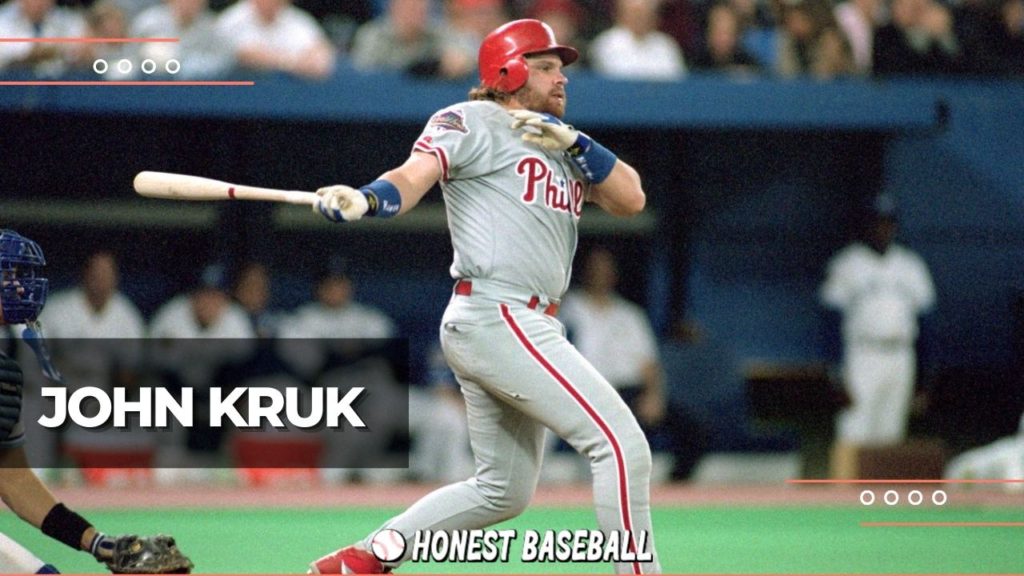
3-time MLB All-Star Kruk was a fan-favorite player known for his unique personality and stocky build. Kruk played for 10 seasons and won a Gold Glove award.
He was 1.77 m and weighed over 93 kg during his playing career. Therefore, he had an extremely high BMI of approximately 29.7 kg/m2.
David Wells

Despite his fatty physics, Wells was a left-handed pitcher who had a successful career in the MLB. Not only that, but the MLB star had obesity issues also.
To give you the reference – his weight was 117 kg, and his height was 1.9 m, resulting in a BMI of 32.4 kg/m2.
“Any BMI measuring more than 30 is considered an obesity state in the case of the North American region.”
Wells had a long baseball career of 21 seasons. He got the MLB All-Star title 3 times and pitched a perfect game in 1998.
CC Sabathia
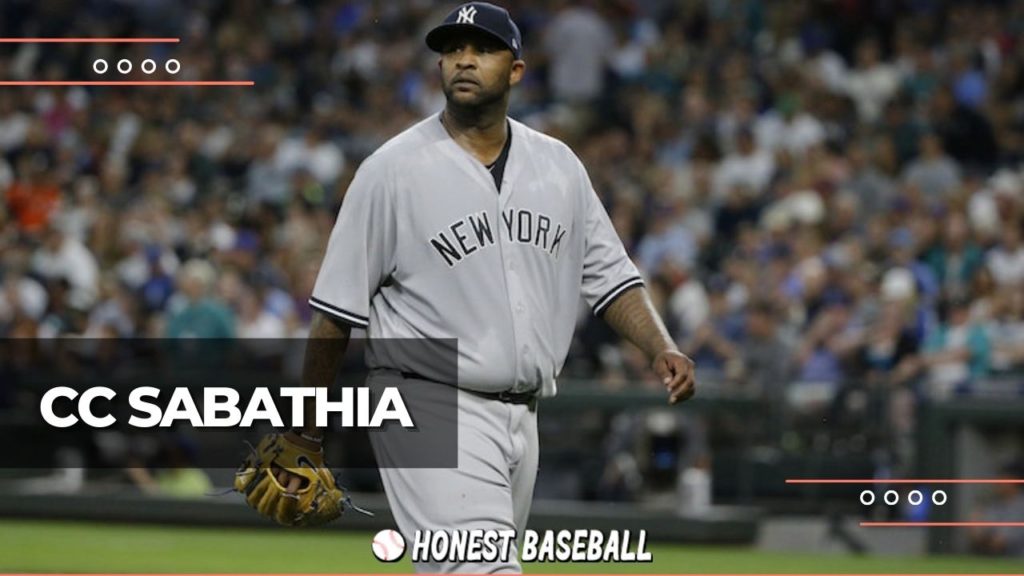
Sabathia played for 19 seasons, was a six-time MLB All-Star, and won the American League Cy Young Award in 2007. He is also known for his big belly and related hip-waist circumference.
And it’s needless to mention that he battled weight gain throughout his career. You can get an idea about his obese figure from the image.
He was 1.98 m and weighed over 136 kg, which gave him a BMI of approximately 34.7 kg/m2.
Prince Fielder

In his 12-season career, he was an MLB All-Star 6 times and won 2 Silver Slugger awards. Except for being recognized as a first baseman and designated hitter, Fielder was famous for his aggressive hitting and large body size.
He was 1.8 m and weighed over 125 kg before retiring during his playing career, which gave him a BMI of approximately 38 kg/m2.
As mentioned earlier, height and weight are indirect reflectors of fatty physics. However, BMI says a lot about this sort of body data.
Therefore, as seen in the picture, Fielder looked pretty bulky; however, his weight was less than many players.
Tony Gwynn
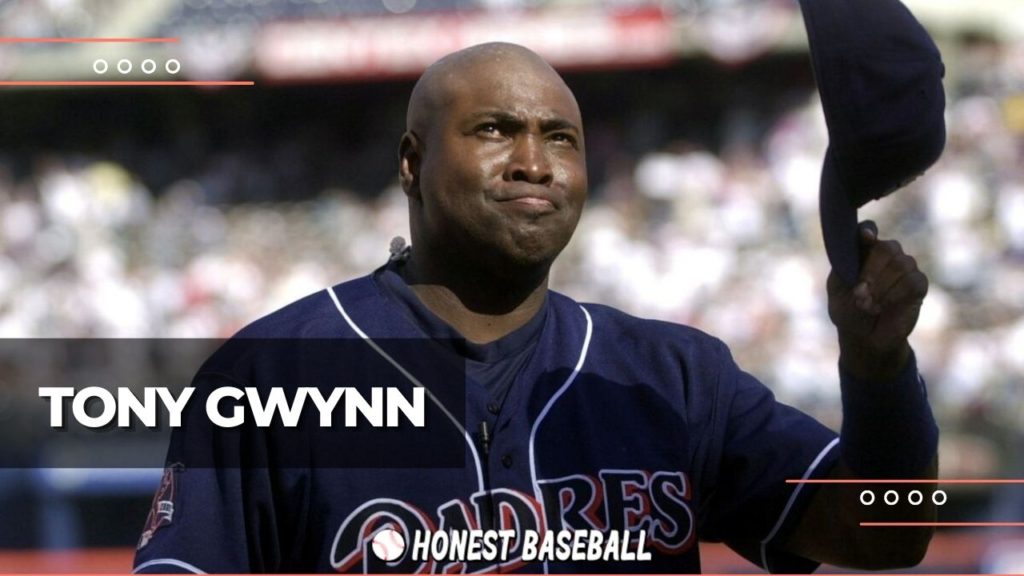
Gwynn was a revered outfielder for the San Diego Padres, celebrated for his batting ability and consistency.
Standing tall at 1.83 m, he weighed over 99.33 kg at the time of his MLB career, resulting in a BMI of approximately 29.7 kg/m2. Hence, he found himself in the overweight category.
Despite his weight, Gwynn played for an impressive 20 seasons, earning himself 15 MLB All-Star selections and 8 batting titles.
“He was regarded as one of the greatest hitters in the history of the game, with a career batting average of .338, 3,141 hits, and a place in the Baseball Hall of Fame.”
Gwynn’s success on the field proved that being overweight didn’t necessarily diminish a player’s performance or legacy in the sport.
Mo Vaughn
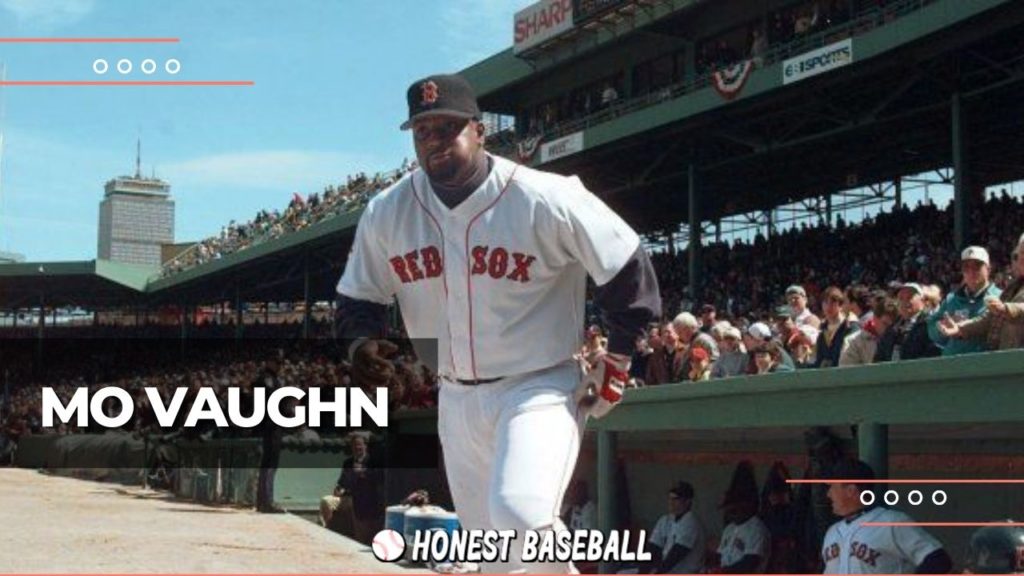
Mo was a larger-than-life first baseman known for his towering presence and thunderous power hitting.
With a height of 1.85 meters, he tipped the scales at over 102 kilograms during his playing career, resulting in a BMI of approximately 29.8 kg/m2, putting him just shy of the obese category.
He played for 12 seasons. He was recognized with 3 MLB All-Star titles and the coveted American League MVP award in 1995.
His imposing figure struck fear into opposing pitchers and made him a fan favorite for his ability to launch the ball into the stratosphere. Mo Vaughn was a true powerhouse of the game, proving that size can be an advantage in baseball.
Walter Young
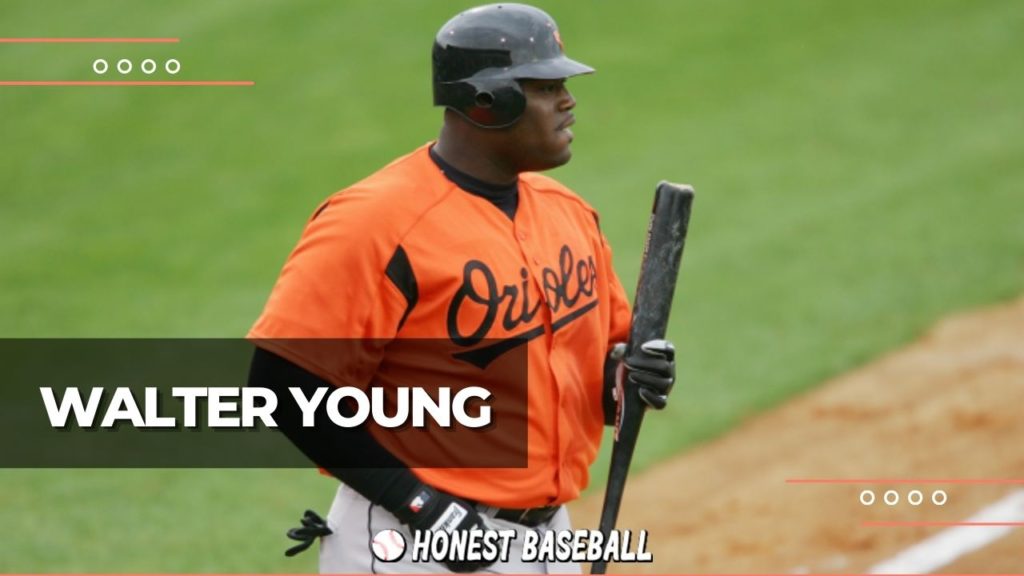
Despite his weight, Walter Young proved to be a force to be reckoned with during his time in the MLB.
He has been labeled as an “obese” player, but that didn’t stop him from achieving success on the field.
Young was known for his incredible power-hitting ability and was often called upon to pinch-hit during critical game moments.
One of Young’s most notable achievements came in 2005 when he hit a home run that traveled a staggering 570 feet during an MLB game.
The feat made him an instant sensation and earned him national recognition as one of the most potent hitters in the game.
Young’s career in the MLB may have been brief, but his remarkable strength and athleticism were undeniable.
Regardless of his enormous size, he could hold his own against some of the best players in the world and left a lasting impression on the baseball world.
Frequently Asked Questions
Does weight matter in baseball?
While weight has been a part of baseball history, it’s not the ultimate measure of a player’s success on the field.
Baseball demands a range of physical abilities like speed, agility, strength, and endurance, and weight doesn’t always dictate a player’s performance.
However, carrying extra weight can hamper mobility and potentially lead to injuries or long-term health issues.
So, while weight matters, it’s just one factor that makes a great ballplayer.
What body type is best for baseball?
There isn’t a single “ideal” or “best” body type for baseball because on-field success requires diverse physical abilities. Nonetheless, athletes with a balance of strength, speed, agility, and endurance frequently excel in the sport.
This can change depending on the position, as some roles may focus more on particular physical characteristics.
Is being tall a disadvantage in baseball?
No, being tall is not necessarily a disadvantage in baseball. Being tall can provide advantages in certain positions, such as a pitcher or first baseman, where height can give players a better reach and ability to cover more ground.
However, being tall can also make it harder to maintain balance and agility, which can be important in other positions like infielder or outfielder.
Who is the heaviest baseball player?
Well, I did some digging and found out Walter Young holds the title for the heaviest player in MLB history, weighing in at a whopping 322 lbs or 146 kg! He played for the Baltimore Orioles in 2005.
Did you know that his nickname was “No Neck”? Let me know in the comments if you think being heavy is an advantage or a disadvantage in baseball!
How much should a baseball player weigh?
Unlike some other sports where there are strict weight categories, baseball doesn’t have a specific weight requirement. A player’s weight can vary depending on position, body type, and physical attributes.
Wrapping Up
Let’s summarize my discussion on “why are baseball players fat.” Some factors contributing to this trend are changes in sports science, diet plans, and lifestyle. If considering the wrong sides, steroids are also a reason behind the increasing fatty players ratio.
As baseball evolves, it’s critical for players, coaches, and fans to consider the impact of weight on both athletic performance and overall health.
Lastly, as fans and supporters of the sport, we should focus on celebrating the athleticism and talent of baseball players, regardless of their body size or shape. So, whether fat or lean, let’s cheer for their baseball success in the coming years.
More articles you might be interested in:
Why Do Baseball Players Spit? Secrets Unveiled!
Why Do Baseball Players Eat Sunflower Seeds
Why Do Baseball Players Chew Tobacco?

Hello everyone. My name is Jason Butler, and I live in California, America. I was a professional AAA Minor League Baseball player. I lost my chance of playing MLB for injury issues, but I did not lose my love for baseball. I attended the coaching training program and am now working as a coach in a small school in San Diego.
I always love to share my experience and knowledge if that can help you. Play baseball, and stay fit.
